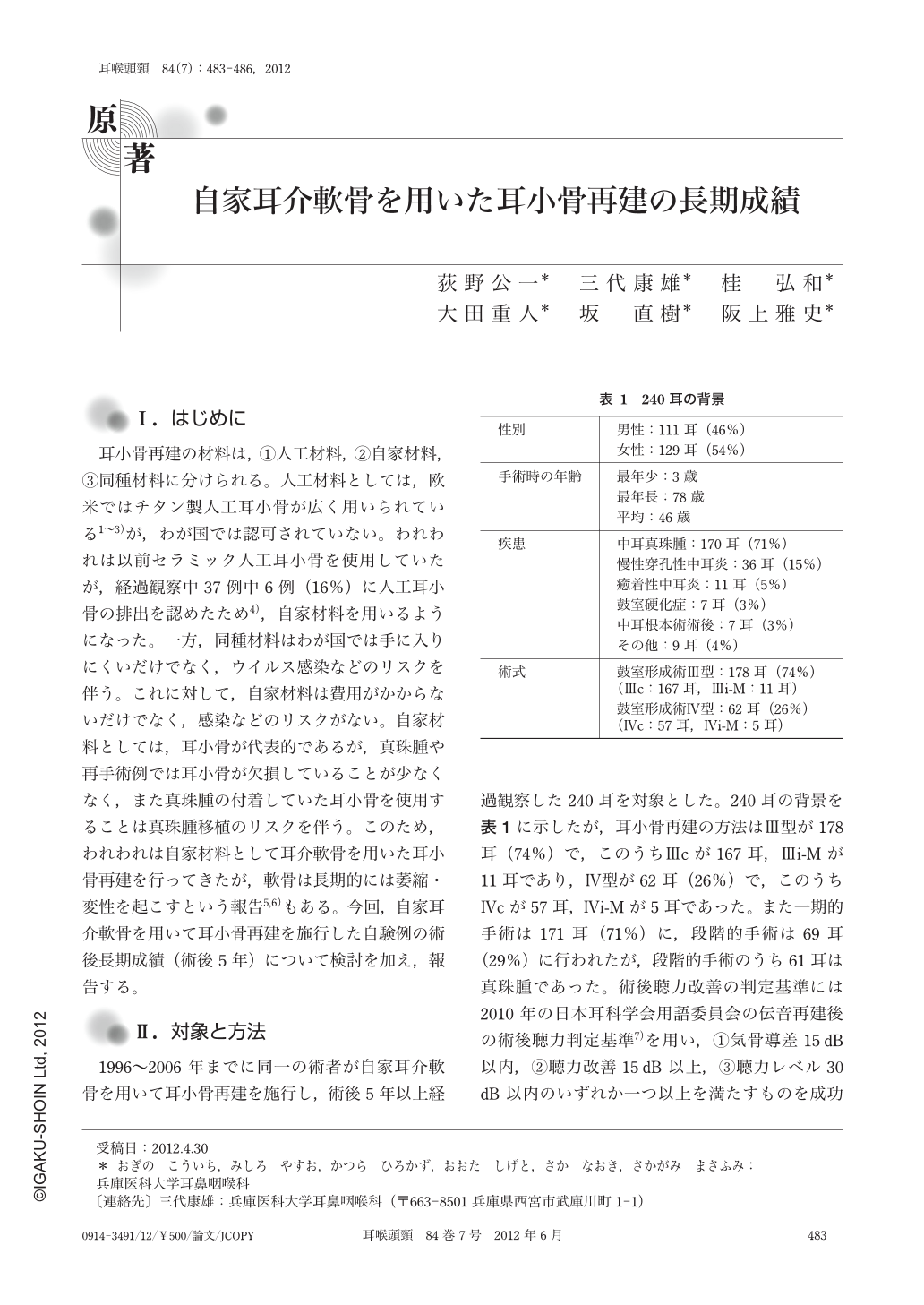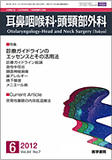Japanese
English
- 有料閲覧
- Abstract 文献概要
- 1ページ目 Look Inside
- 参考文献 Reference
Ⅰ.はじめに
耳小骨再建の材料は,①人工材料,②自家材料,③同種材料に分けられる。人工材料としては,欧米ではチタン製人工耳小骨が広く用いられている1~3)が,わが国では認可されていない。われわれは以前セラミック人工耳小骨を使用していたが,経過観察中37例中6例(16%)に人工耳小骨の排出を認めたため4),自家材料を用いるようになった。一方,同種材料はわが国では手に入りにくいだけでなく,ウイルス感染などのリスクを伴う。これに対して,自家材料は費用がかからないだけでなく,感染などのリスクがない。自家材料としては,耳小骨が代表的であるが,真珠腫や再手術例では耳小骨が欠損していることが少なくなく,また真珠腫の付着していた耳小骨を使用することは真珠腫移植のリスクを伴う。このため,われわれは自家材料として耳介軟骨を用いた耳小骨再建を行ってきたが,軟骨は長期的には萎縮・変性を起こすという報告5,6)もある。今回,自家耳介軟骨を用いて耳小骨再建を施行した自験例の術後長期成績(術後5年)について検討を加え,報告する。
Two hundred and forty ossiculoplasties operated on by a single surgeon between 1996 and 2006 and followed up for longer than 5 years were reviewed. The successful rates of long-term hearing outcomes were 60% in all,65% in type Ⅲ tympanolasty,and 48% in type Ⅳ tympanoplasty. There was no significant difference between short-term and long-term outcomes. The better prognostic factors of long-term hearing outcomes using multivariate analysis were type Ⅲ tympanoplasty,children,and local anesthesia. There was no extrusion or exposure of cartilage during long-term follow-up. It was concluded that autologous auricular cartilage is a safe and reliable material for ossiculoplasty.

Copyright © 2012, Igaku-Shoin Ltd. All rights reserved.


